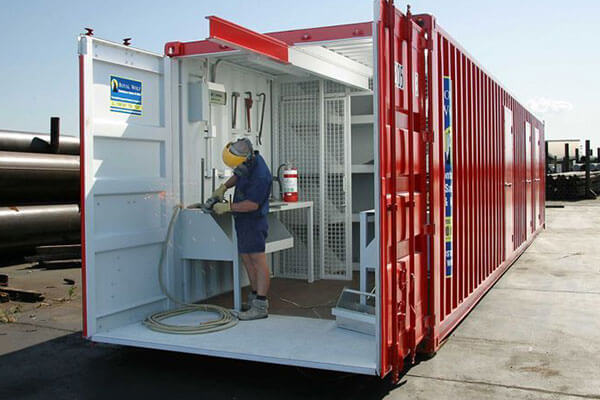“Maintaining and repairing shipping containers is crucial for ensuring their longevity, functionality, and safety. Whether you’re using containers for storage, transportation, or construction purposes, proper maintenance practices can help extend their lifespan and protect your investment. In this guide, we’ll explore essential tips and techniques for container maintenance and repair.”
1. Regular Inspections:
Conduct routine inspections of your containers to identify any signs of damage, corrosion, or wear and tear.
Check for rust, dents, holes, and loose or damaged fittings, such as door seals and locking mechanisms.
2. Cleaning and Surface Preparation:
Clean the exterior and interior surfaces of the container regularly to remove dirt, debris, and corrosive substances.
Use mild detergents, water, and a soft brush or pressure washer to clean the container effectively.
Remove rust and corrosion using appropriate methods, such as sanding, wire brushing, or chemical treatments.
3. Rust Prevention and Treatment:
Apply rust inhibitors or protective coatings to prevent corrosion and extend the lifespan of the container.
Address rust and corrosion promptly by removing affected areas and applying rust converters or primers to prevent further deterioration.
4. Lubrication and Maintenance of Moving Parts:
Lubricate hinges, door handles, locking mechanisms, and other moving parts regularly to ensure smooth operation and prevent rust and corrosion.
Inspect and replace worn or damaged parts, such as seals, gaskets, and locking rods, to maintain the security and integrity of the container.
5. Structural Repairs:
Repair dents, holes, and structural damage using welding, patching, or panel replacement techniques.
Reinforce weak or damaged areas of the container, such as corners and floor joists, to ensure structural integrity and stability.
6. Weatherproofing and Sealing:
Seal gaps, cracks, and openings in the container to prevent water infiltration, pest infestation, and air leakage.
Install weatherproofing materials, such as caulks, sealants, and insulation, to enhance thermal efficiency and protect the contents of the container.
7. Electrical and Mechanical Systems:
Inspect and maintain electrical and mechanical systems, such as lighting, HVAC units, and ventilation systems, to ensure proper functionality and safety.
Replace or repair faulty components and wiring to prevent electrical hazards and malfunctions.
8. Compliance with Regulations and Standards:
Ensure that your containers comply with relevant regulations, codes, and standards for safety, structural integrity, and environmental protection.
Seek professional assistance and inspections to verify compliance and address any deficiencies or non-compliance issues.
By following these maintenance and repair guidelines, you can prolong the lifespan of your shipping containers, minimize downtime and repair costs, and ensure their safe and reliable performance for years to come.”
 عربي
عربي عربي
عربي